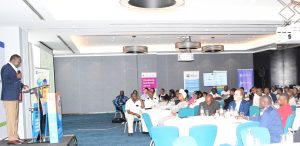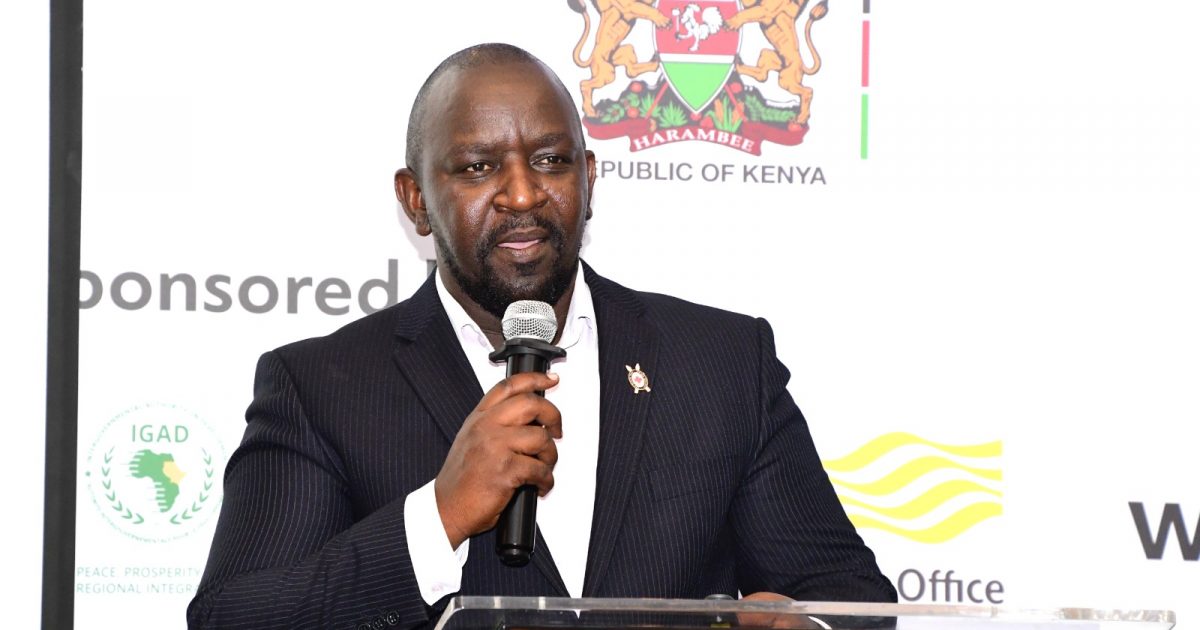The government is formulating a national roadmap on early warning, a document that aims to address how disasters can be prevented and managed before they occur.
A team of technical experts drawn from government ministries, departments and agencies, state corporations and representatives of development partners have joined together to draft a document known as Early Warning For All (EW4ALL) that will provide guidance on disaster risk management across the country.
Early Warning For All, which has four pillars, is a groundbreaking initiative to ensure that everyone on earth is protected from hazardous weather, water or climate events through life-saving Early Warning Systems (EWS) by the end of 2027.
Principal Secretary (PS), State Department for Environment and Climate Change, Eng. Festus Ng’eno says the finalization of the roadmap should establish funding avenues and outline technical know-how of the country’s institutional resources that address and identify gaps that support the implementation of the identified processes.
Ng’eno said the document should also ensure strengthened coordination across the four pillars of the EW4ALL for it to proceed in a more cohesive and integrated manner.
The PS made the remarks in a speech read on his behalf by the Secretary for Administration, State Department for Environment and Climate Change Mr John Elungata during a three-day workshop of technical resource personnel in the Early Warnings For All Initiative held in Nairobi.
“The challenges before us remain as a constant reminder that we need to move forward together to ensure that every Kenyan is able to receive timely, accurate and relevant early warning information to build resilience while preserving lives and livelihoods,” stated Eng. Ng’eno.

The four pillars of the Early Warning For All include Pillar 1, which is Disaster Risk Knowledge that focuses on the systematic collection of risk data and risk assessments on hazards and vulnerabilities to improve risk understanding.
Pillar 2 deals with weather observations and forecasting, which focuses on developing hazard monitoring, forecasting and early warning services, while Pillar 3 is about dissemination and communication, dealing with communication of risk information in a manner that can be understood and used, with the aim of reaching all those who need it for decision-making and planning.
Pillar 4 which is concerned with Preparedness to Respond, focuses on building national and community preparedness and response capabilities.
The Director of Kenya Metrological Department, Dr David Gikungu, advised the experts to not only dwell on what is likely to happen but on establishing early warning systems that will make the country by 2027 be able to predict and act before disasters strike.
“We are all ready to work very hard so that hazards will just remain hazards. We will not report them as disasters because the level we are talking about will be highly enhanced,” he stated.
The technical experts are looking at the existing gaps in all the pillars in the areas of data analysis, stakeholder mapping and emerging pillars for proper coordination, governance, communication, advocacy, planning and financing, as well as monitoring, evaluation and reporting.
A representative from Communication Authority of Kenya, Dr. Emma Otieno, said inclusion of stakeholders is paramount for the success of EW4ALL, a reason the Authority will spend Sh2 billion set aside by the government under the Universal Service Fund to impart digital skills knowledge to the youth, women, and those in the marginalized and arid and semi-arid land areas.
She noted that knowledge will enable them to utilize the skills in understanding early warning signs and acting as required besides communicating to others.
The Manager Climate Change Adaptations at the Red Cross Society, Mr Peter Murgor, said the current gaps that are being worked on will guide both the county and national governments and communities to use early warning to address, prevent and mitigate the impacts of disasters early enough.
“We are developing principles for people-centered, locally led approaches in coming up with a structure that will guide end users on the actions to be taken when warnings are received and how warnings can be disseminated in real time,” said Murgor.
He cited early actions, lack of disaster matrix, fragmented data and absence of explicit guidelines as some of the gaps in handling disaster management.
Murgor said there is need for the country to have resilient infrastructure that will enable the communities to act on their own while using their own resources and to have a coping mechanism before they receive assistance.
The formulation of the EW4ALL document was officially launched on May 21, 2025 in Nairobi by Cabinet Secretary for Environment, Climate Change and Forestry Dr Deborah Barasa. The initiative of EW4ALL was launched in 2022 by United Nations Secretary-General António Guterres.
President William Ruto was designated the Champion for EW4ALL initiative in Africa during the Africa Climate Summit in 2023 held in Nairobi because of his demonstrated leadership in climate action.
Sponsors of the process include the Kenya government, United Nations Office for Disaster Risk Reduction, World Metrological Organization, Communication Authority of Kenya, International Telecommunication Union and the International Federation of Red Cross and Red Crescent Societies, among others.
By Bernadette Khaduli




